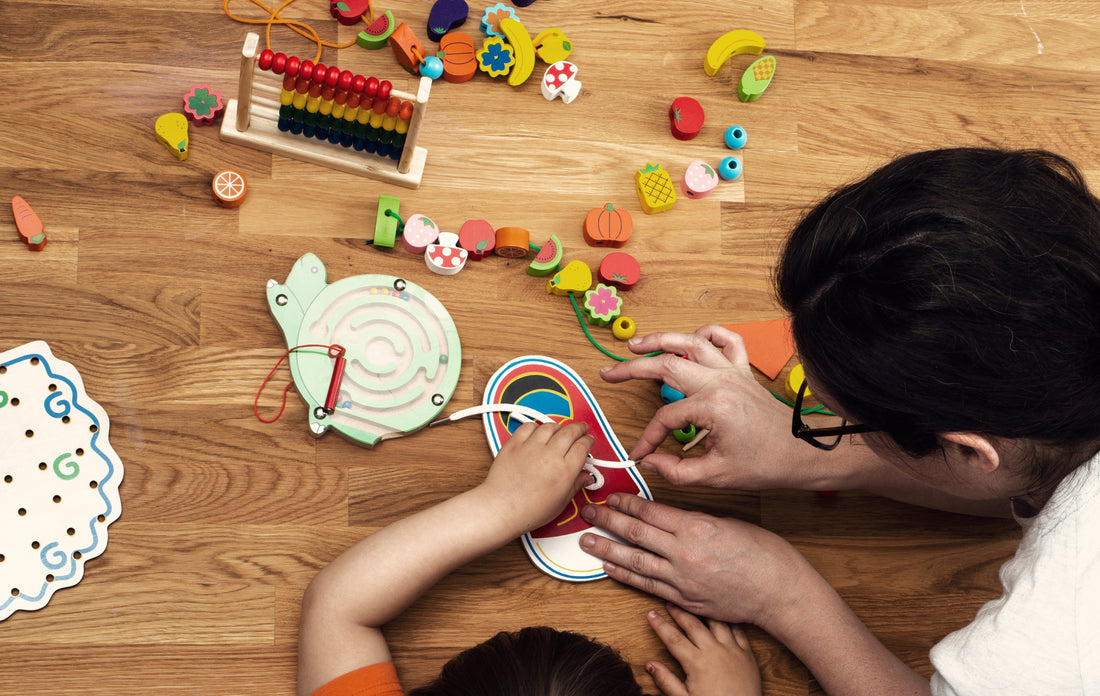
“Ball or Car?” Using Choices to Create Language Opportunities
Creating language opportunities is the most effective way to promote language development. One of the easiest ways to start encouraging language is by providing choices. Offering choices increases vocabulary, promotes decision-making and creates language opportunities. In this blog post, I will explore why and how incorporating choices into daily interactions and play can support language growth in young learners.
Why Offer Choices?
1. Promotes Active Engagement
When children are presented with options, they become active participants in the conversation. Instead of simply following instructions, they are empowered to make decisions. Even if you know the child usually wants to play on the slide. Offer “swing or slide” to build confidence in making a decision.
2. Expands Vocabulary and Receptive Language
Providing children with choices exposes them to a broader range of vocabulary. For example, when given the option of a red ball or a blue ball, children will start using words to describe color and objects. Over time, they learn to label, categorize, and articulate their world with greater complexity.
3. Increase Receptive Language
Choices also support receptive language development by helping the child understand the meaning of the vocabulary you use. I will pair a familiar object (e.g., dog) with an unfamiliar object (e.g., hippo), hold up the two choices and model the unfamiliar word. Since the child knows one object is a dog, they are now learning that the other object must be a hippo.
4. Creates a Language Opportunity
Offering two choices gives space for the child to use their language independently. When we just hold up one object and provide a verbal model we are practicing imitation. Holding up two objects creates an opportunity for the child to request the preferred object more independently.
5. Using Words for a Variety of Pragmatic Functions
By using choices rather than just single words, you are encouraging a child to use words for more purposes rather than just labeling or requesting. For example, a child may answer a yes/no choice: Do you want to go outside? Yes or no? Giving the child the opportunity to answer a question.
How to Use Choices Effectively
Start Simple
When working with younger children or those just beginning to develop language skills, keep your choices simple. For example, "Do you want the red car or the blue car?" or "Do you want to play with blocks or read a book?" Hold up the choices for a visual cue. This promotes comprehension and encourages them to use their words to communicate.
Limit the Number of Choices
Too many options can overwhelm a child. To avoid this, limit your choices to two or three options. This makes it easier for children to focus on the decision and respond confidently. Gradually increase the complexity of the choices as they become more comfortable with language.
Be Patient and Allow Time for Responses
Offering a choice is more complex than providing a model of a single object. Many times when children are transitioning from using words to request to making a choice, they will reach for both choices, not understanding it is a choice. Giving extended wait time provides more time to process the auditory information to make the appropriate choice.
When to Use Choices
In Daily Routines
Incorporating choices into everyday activities makes language development a natural part of a child’s routine. For instance, when it’s time to get dressed, you can ask, "Do you want to wear your blue shirt or your green shirt today?" During mealtime, you might ask, "Would you like apples or bananas with your lunch?" Making a choice allows the child to feel empowered throughout their day and gain confidence with their communication.
During Play
Offering choices during play can expand the child’s imagination and language. You can give a choice when picking a toy, during pretend play or within an activity. Don’t be afraid to be silly to encourage more language (e.g., “Does the hat go on his head or foot?”).
Final Thoughts
Incorporating choices into daily life can significantly impact a child’s language development. By offering simple, age-appropriate options, we encourage children to engage with their world, express themselves and build confidence in their communication abilities. As a speech-language pathologist I have witnessed the power of choices to foster language and I encourage you to try this strategy at home with your little ones!